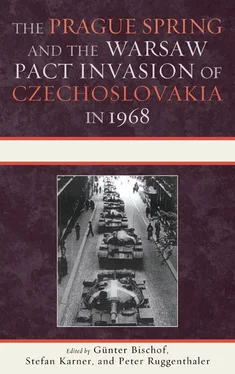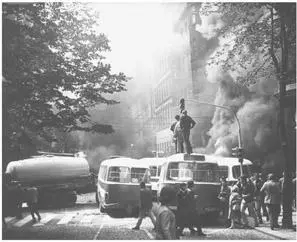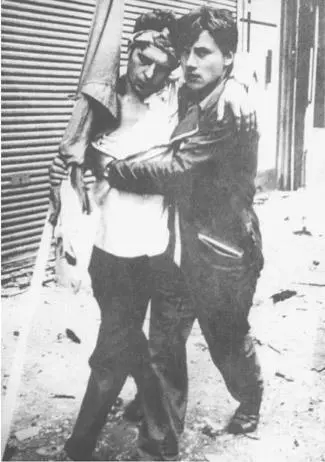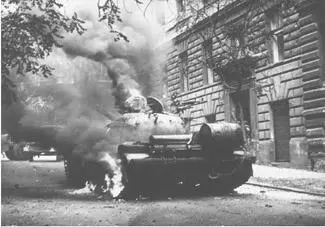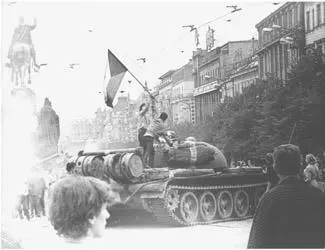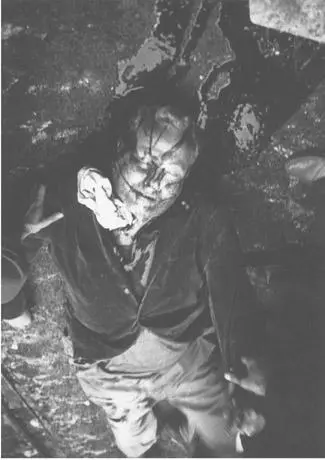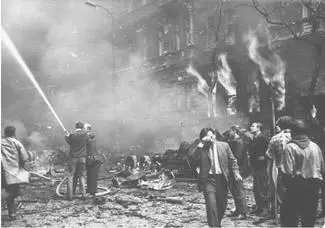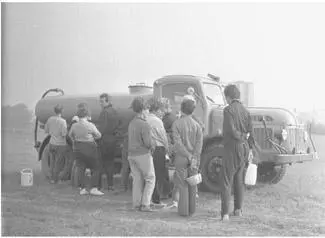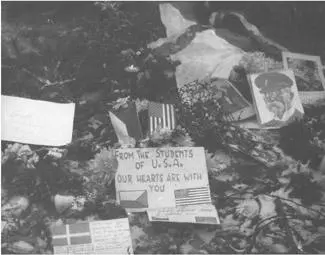Günter Bischof - The Prague Spring and the Warsaw Pact Invasion of Czechoslovakia in 1968
Здесь есть возможность читать онлайн «Günter Bischof - The Prague Spring and the Warsaw Pact Invasion of Czechoslovakia in 1968» весь текст электронной книги совершенно бесплатно (целиком полную версию без сокращений). В некоторых случаях можно слушать аудио, скачать через торрент в формате fb2 и присутствует краткое содержание. Город: Lanham, Год выпуска: 2010, ISBN: 2010, Издательство: Lexington Books, Жанр: История, Политика, на английском языке. Описание произведения, (предисловие) а так же отзывы посетителей доступны на портале библиотеки ЛибКат.
- Название:The Prague Spring and the Warsaw Pact Invasion of Czechoslovakia in 1968
- Автор:
- Издательство:Lexington Books
- Жанр:
- Год:2010
- Город:Lanham
- ISBN:978-0-7391-4304-9
- Рейтинг книги:4 / 5. Голосов: 1
-
Избранное:Добавить в избранное
- Отзывы:
-
Ваша оценка:
The Prague Spring and the Warsaw Pact Invasion of Czechoslovakia in 1968: краткое содержание, описание и аннотация
Предлагаем к чтению аннотацию, описание, краткое содержание или предисловие (зависит от того, что написал сам автор книги «The Prague Spring and the Warsaw Pact Invasion of Czechoslovakia in 1968»). Если вы не нашли необходимую информацию о книге — напишите в комментариях, мы постараемся отыскать её.
Dubcek and most of the other Czechoslovak reformers were temporarily restored to power, but their role from late August 1968 through April 1969 was to reverse many of the reforms that had been adopted. In April 1969, Dubchek was forced to step down for good, bringing a final end to the Prague Spring. Soviet leaders justified the invasion of Czechoslovakia by claiming that “the fate of any socialist country is the common affair of all socialist countries” and that the Soviet Union had both a “right” and a “sacred duty” to “defend socialism” in Czechoslovakia. The invasion caused some divisions within the Communist world, but overall the use of large-scale force proved remarkably successful in achieving Soviet goals. The United States and its NATO allies protested but refrained from direct military action and covert operations to counter the Soviet-led incursion into Czechoslovakia.
The essays of a dozen leading European and American Cold War historians analyze this turning point in the Cold War in light of new documentary evidence from the archives of two dozen countries and explain what happened behind the scenes. They also reassess the weak response of the United States and consider whether Washington might have given a “green light,” if only inadvertently, to the Soviet Union prior to the invasion.
